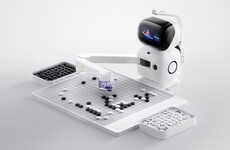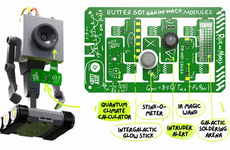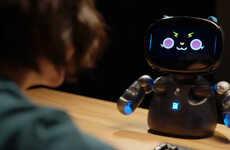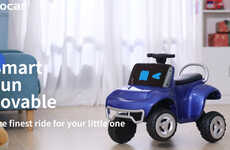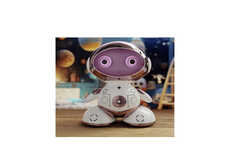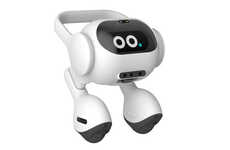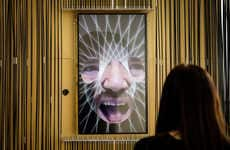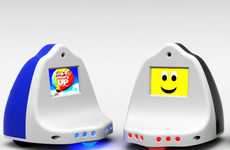
Smartibot is a DIY Cardboard Robot That Uses Artificial Intelligence
Kalin Ned — June 26, 2018 — Art & Design
References: kickstarter
Smartibot is essentially a DIY cardboard robot that makes use of developments in technology and harnesses artificial intelligence to enable a dynamic smart interface. The product is ideal for consumers interested in quirky tech products, as well as a great way to have some family fun.
Smartibot is paired with a smartphone. Users can remotely control the DIY cardboard robot via an application or can attach the phone to the AI-powered miniature device to serve "as its brain."
The Smartibot app is equipped with a powerful technology that enables it to recognize objects as people, dogs, bicycles and cars. The Kickstarter campaign highlights some uses for the DIY cardboard robot that include telling "the robot to follow you around with a cup of tea" or "chasing your dog [...] out of your bedroom."
Smartibot is paired with a smartphone. Users can remotely control the DIY cardboard robot via an application or can attach the phone to the AI-powered miniature device to serve "as its brain."
The Smartibot app is equipped with a powerful technology that enables it to recognize objects as people, dogs, bicycles and cars. The Kickstarter campaign highlights some uses for the DIY cardboard robot that include telling "the robot to follow you around with a cup of tea" or "chasing your dog [...] out of your bedroom."
Trend Themes
1. DIY Robotics - There is an opportunity for businesses to create more DIY robotics products that utilize AI technologies.
2. Artificial Intelligence Applications in Consumer Products - AI technologies can be integrated into consumer products to create more intelligent and interactive designs.
3. Object Recognition Technologies - Developments in object recognition allow for more natural and intuitive interactions with devices such as DIY cardboard robots.
Industry Implications
1. Consumer Electronics - Consumer electronics companies can capitalize on the growing interest in quirky tech products by incorporating AI-powered features into their designs.
2. Toy Manufacturing - Toymakers can create educational and creative robots made of cardboard that can help children learn basic concepts about robotics and programming.
3. Smartphone App Development - App developers can explore more creative and interactive ways to use AI-powered object recognition technologies to enhance the user experience and create new use cases.
5.3
Score
Popularity
Activity
Freshness


